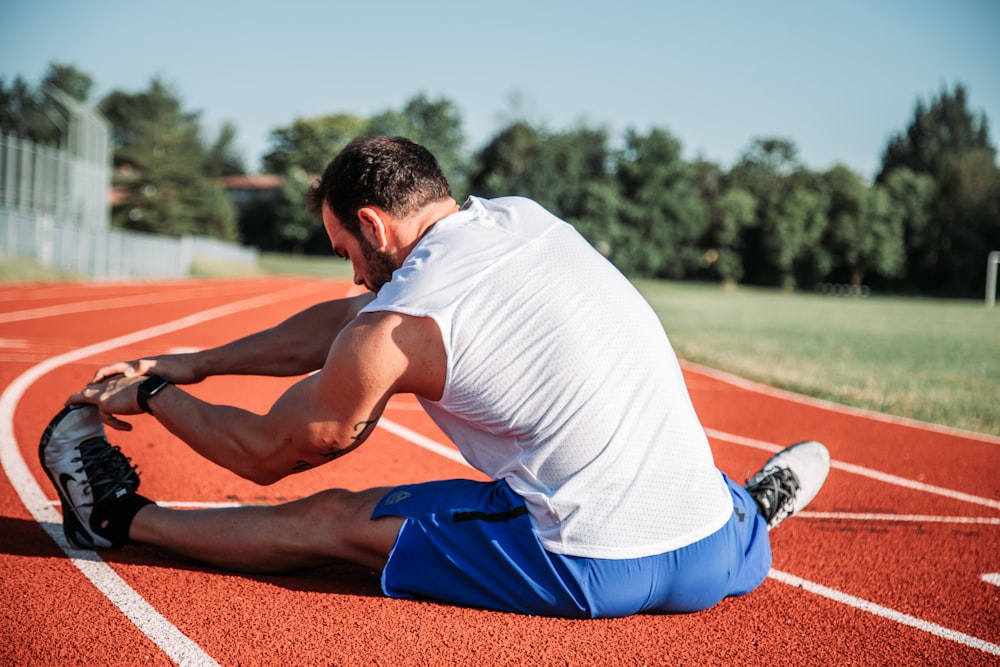目次
ハムストリングスをストレッチする際には足関節は背屈位ではなく底屈位の方がよい
理学療法士・作業療法士の皆様も日々の理学療法・作業療法の中でハムストリングスのストレッチングを行う機会は少なくないと思います.
ハムストリングスのストレッチの方法も様々ですが,膝関節を伸展した状態で股関節の屈曲角度を増加させていく,いわゆるSLRのポジションでストレッチングが行われることが多いと思います.
理学療法士・作業療法士の皆様は,ハムストリングスをストレッチする際に足関節のポジションってどうされていますか?
背屈位の方がなんとなく膝窩部に伸張感が得られそうな気がしますが,ハムストリングスを伸張できるのは足関節を背屈位とした場合でしょうか?
はたまた底屈位でしょうか?
今回はハムストリングスをストレッチする際に足関節は背屈位・底屈位のどちらが適切かを明らかにした研究報告を紹介させていただきます.

今回ご紹介する論文
J Biomech. 2019 Nov 11;96:109358. doi: 10.1016/j.jbiomech.2019.109358. Epub 2019 Oct 9.
Effects of ankle position during static stretching for the hamstrings on the decrease in passive stiffness.
Nakao S1, Ikezoe T2, Nakamura M3, Saeki J4, Kato T2, Umehara J5, Ichihashi N2.
今回ご紹介する論文は2019年に掲載された新しい内容です.
研究の目的
Static stretching is frequently performed to improve flexibility of the hamstrings, although the ankle position during hamstring stretching has not been fully investigated. We investigated the effects of ankle position during hamstring stretching on the decrease in passive stiffness.
静的ストレッチングはハムストリングスの柔軟性改善を目的に行われることの多いアプローチです.
しかしながらハムストリングスをストレッチングする際の足関節肢位に関してはこれまで調査がなされておりません.
この研究ではハムストリングスをストレッチングする際の足関節肢位が受動的スティフネスの減少に与える影響を明らかにすることを目的としております.
研究の方法
Fourteen healthy men performed static stretching for the hamstrings with the ankle dorsiflexed and plantar-flexed in a randomized order on different days. The hip was passively flexed to the maximum angle which could be tolerated without stretch pain with the knee fully extended; this was maintained for 5 min, with 1-min stretching performed in 5 sessions. Final angles and passive stiffness were measured before and after stretching. The final angle was defined as that formed by the tibia and horizontal plane when the knee was passively extended from hip and knee angles at 90° flexion to the maximum extension angle which could be tolerated without stretch pain. Passive stiffness was determined by the slope of torque-angle curve during the measurement of the final angle.
対象は健常男性14例となっております.
足関節を背屈させた肢位と,足関節を底屈させた肢位の2つの肢位に無作為に割り付け,異なる日にハムストリングスの静的ストレッチングを実施しております.
膝関節を最大伸展させた状態から疼痛を伴うことなく耐えられる最大の股関節を他動的に最大屈曲させ,この肢位を5分間保持しております.
股関節最大屈曲角度および受動的スティフネス(これがハムストリングスの伸張感を評価する指標となっております)をストレッチング前後で評価しております.
最終的なアウトカムとした角度計測は股関節・膝関節を屈曲90°とした状態から膝関節を他動的に伸展させた際の脛骨と水平面の成す角度としております(伸張痛が無い状態での最大角度)
受動的スティフネスはトルク角度曲線における傾きを指標としております.
研究の結果
The final angle significantly increased after stretching with the ankle dorsiflexed and plantar-flexed, whereas passive stiffness significantly decreased only after stretching with the ankle planter-flexed.
結果ですが,ハムストリングスの柔軟性の指標となる股関節・膝関節を屈曲90°とした状態から膝関節を他動的に伸展させた際の脛骨と水平面の成す角度は足関節背屈位・底屈位いずれにおいても,ストレッチング後に有意に向上しました.
一方で受動的スティフネスに関しては足関節底屈位のみで有意に改善しております.
研究の考察
The results suggest that passive stiffness decreases after stretching with the ankle planter-flexed but not after stretching with the ankle dorsiflexed, although the range of joint motion increases regardless of the ankle position during 5-min stretching for the hamstrings. These results indicate that static stretching should be performed with the ankle plantar-flexed when aiming to decrease passive stiffness of the hamstrings.研究
この研究結果から,受動的スティフネス(筋腱複合体の柔軟性)を向上させたい場合に,ハムストリングスのストレッチングを実施する際,足関節は背屈位ではなく足関節底屈位で実施するほうが効果的であることが示されました.
今回はハムストリングスをストレッチする際に足関節は背屈位・底屈位のどちらが適切かを明らかにした研究報告を紹介させていただきました.
考えてみると足関節背屈位の方が膝関節屈曲作用を有する腓腹筋の膝関節屈曲作用が強くなりますので,膝窩部の伸張感は大きくなりますが,腓腹筋が伸張されることでハムストリングスへの伸張の程度が小さくなることが推測されます.
そのため底屈位で腓腹筋を緩めた肢位でハムストリングスをストレッチした方がハムストリングスをより伸張することが可能になるものと思われます.
理学療法士・作業療法士の皆様もハムストリングスをストレッチングする場合には足関節底屈位で行ってみてください.







コメント